When it comes to rifles, an AR-15 rifle is among the most popular ones. The history of this rifle is rather long and quite interesting. The AR platform was developed in the middle of the 20th century, and the rifle was intended for military use. Over time, the platform grew in popularity and eventually found its place in the civilian niche. If you are a rifle enthusiast, we suppose this is a story for you. So, what’s the difference between an AR-15 rifle and an M4 carbine? That’s what we’ll talk about here. We’ll compare these rifles from historical and technical perspectives in the hope you’ll find the story interesting and grasp the differences between the M4 and AR-15 platforms.
AR15 – The History
Back in the 1950s, ArmaLite, a famous firearm manufacturer, came up with a design that would later be known as the AR10 rifle. It was pretty innovative for the time, with a patent-filled gas-operated bolt and carrier system. The rifle was chambered for the 7.62x51mm cartridge and had a lot of power for its size, which allowed for easy operation and better control. Six years later, they came up with another platform, the AR10’s younger brother, basically a scaled-down AR10, which we all know as the AR15.
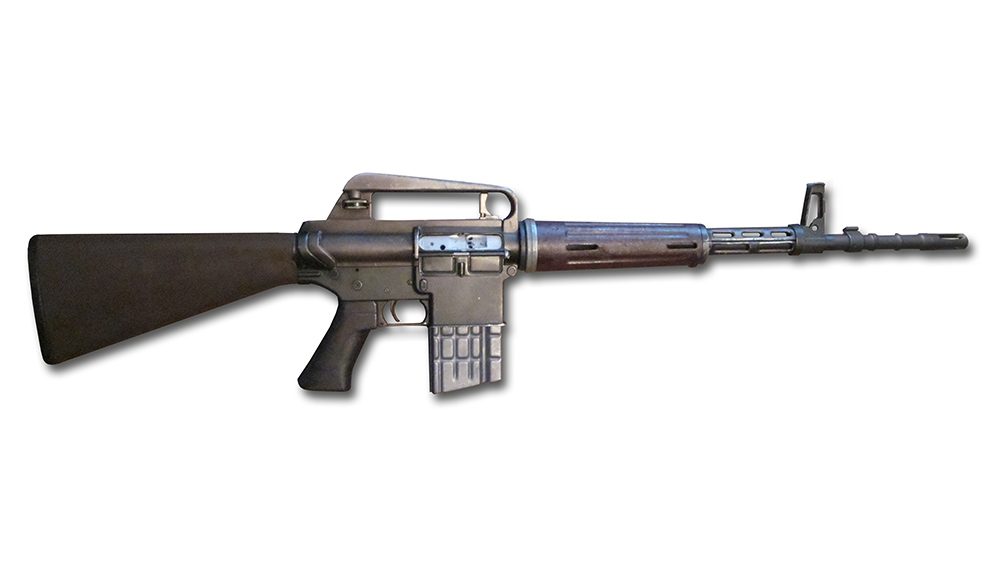
Contrary to what many folks think, the AR in the name doesn’t stand for Assault Rifle. It’s an abbreviation for the manufacturer’s name – ArmaLite, and the original model was called the ArmaLite AR-15. The AR15 was produced in the States between 1959 and 1964 as a lightweight weapon, chambered for a high-velocity, lightweight .223 Remington cartridge, new at the time.
It was a gas-operated, rotating bolt select-fire rifle, with around 6.5 lb. in weight, 39 inches in length, and a 20-inch-long barrel. The rifle was designed for an effective firing range of 500 yards. It was a great design, ideal for infantry, as a lightweight yet effective weapon. Many saw it as an addition to the arsenal to compete with the Russian military rifles in the early years of the Cold War era.
The Colt Era
In 1959, ArmaLite sold the design to Colt. Colt further redesigned the rifle for various military services around the world until it was finally adopted by the US military in 1962. However, in 1963, Colt redesigned the rifle again. A year later, this new rifle went into production under the name M16.
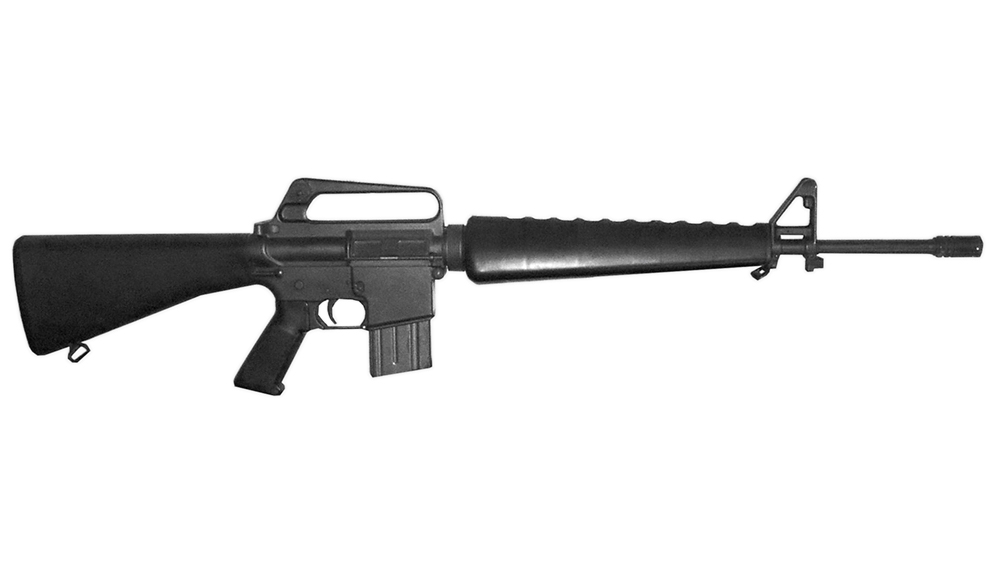
In the following years, a need to distinguish between military weapons and firearms for other uses emerged. Colt continued to use the AR15 name for a line of semi-automatic rifles only. They were all marketed and sold to civilian and law-enforcement customers as Colt AR-15s.
Up Until Today
The design became so popular that it was, in fact, never abandoned. Many manufacturers have adopted the concept, made some modifications, and started their own line of AR-15-style rifles. The list includes names such as Smith and Wesson, Rock River Arms, Daniel Defense, Bushmaster Firearms, FN Herstal, Sig Sauer, Ruger, Stag Arms, Wilson Combat, Century Arms, Palmetto State Armory, and others.
In the 1970s, the Belgian manufacturer FN Herstal developed a new caliber derived from the 223 Remington. It was the 5.56x45mm or 5.56 NATO caliber, which became a standard caliber for the AR-15 rifles in the following years. The manufacturers of AR-15 rifles have competed over the years to offer better and better designs and grab a larger share of the AR-15 niche. That’s why we have so many AR-15 variants today.
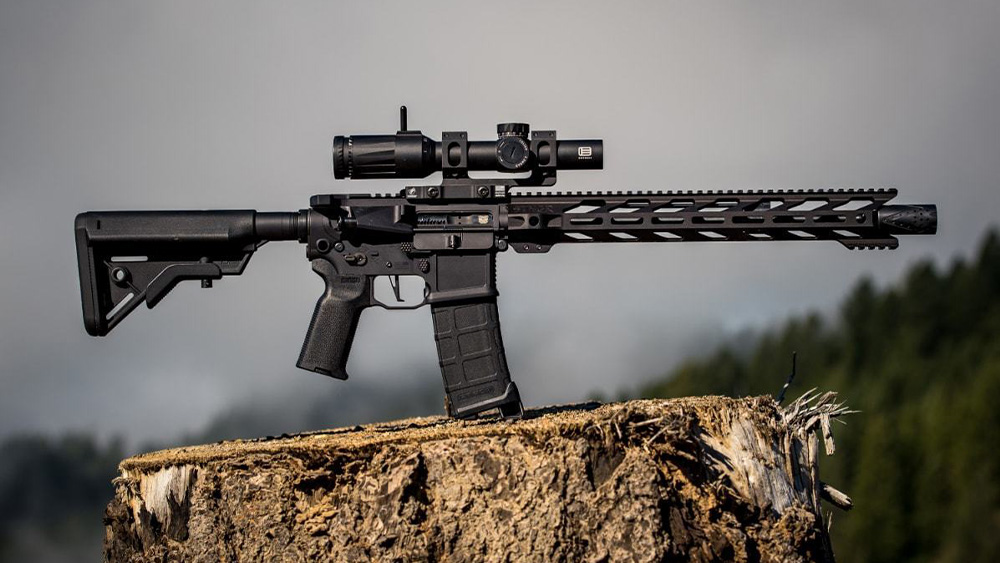
The revolutionary AR-15 platform has evolved a great deal, and there are no indications that this trend is about to change. This is good news for all AR-15 enthusiasts, as they will get even better AR-15 models in future years.
M4 Rifle History
After the adoption of the M16 rifle by the military, there was a need for a smaller version too. The M4 Carbine emerged from the AR-15 platform, and it was sort of a scaled-down version of the M16 rifle. Generally speaking, the M4 was a lighter version of the M16 rifle, the same way the AR-15 was a scaled-down version of the AR10. That was done in 1982 by Colt. After that, the M4 carbine became a sort of military standard as a close-combat range rifle.
After a few upgrades, an M4 carbine is still in use by the military. In 2009, the US Army took ownership of the design, which allowed other companies to improve the design even more. As a result, companies such as FN Herstal, Sig Sauer, Daniel Defense, and Rock River Arms created a newer version – an M4A1 carbine. Upgraded or not, the M4 remains, without question, one of the best close-combat rifles in the world.
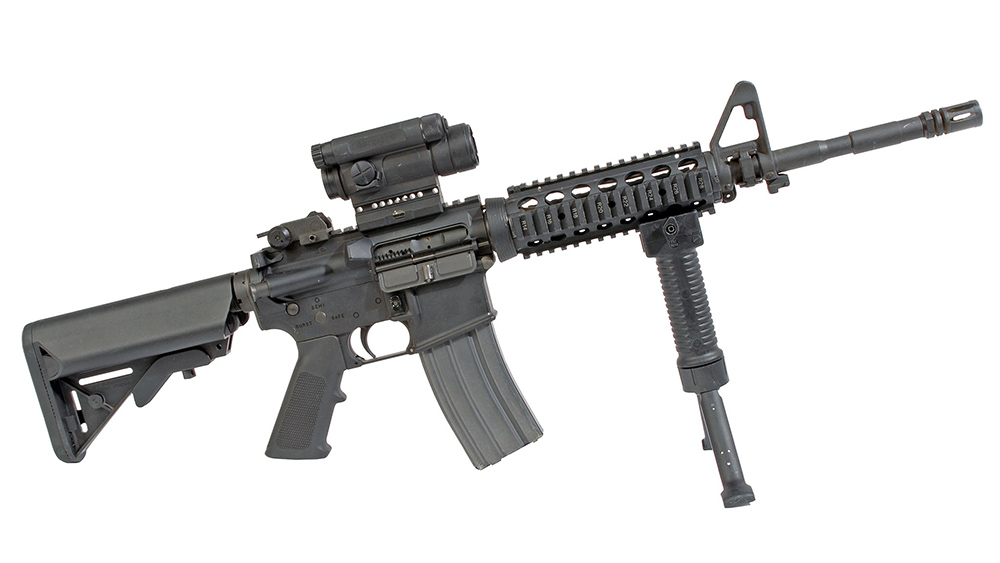
AR-15 and M4 in Popular Culture
Both AR-15 and M4 have become iconic firearms in popular culture, appearing in many military and action movies such as Black Hawk Down, Lone Survivor, John Wick, Heat, Tears of the Sun, FPS and survival video games such as Call of Duty, Battlefield, Far Cry 5, or Ghost Recon, and military fiction and techno-thriller literature such as American Sniper, Red Metal, Rainbow Six, The Walking Dead, Patriot Games, etc.
AR15 and M4 – Similarities and Differences
Although the M4 carbine was in many ways similar to civilian versions of the AR-15 platform, its most distinguished feature was the select-fire option. After all, it is a military rifle, so no surprises there.
The AR-15 rifle and the M4 carbine share a common lineage but differ in design, functionality, and intended use. So, let’s dig into some of the major details:
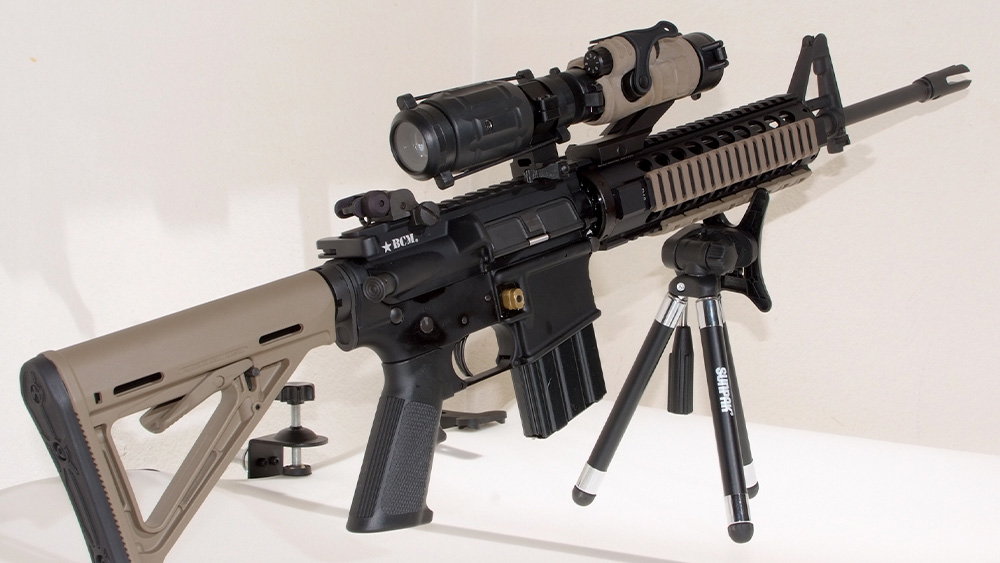
Similarities:
Platform: Both the AR-15 and M4 are based on the same platform, originally developed in the 1950s. They share many interchangeable parts and have similar operating systems.
Caliber: They are typically chambered in 5.56x45mm NATO, although there are models chambered for other calibers too.
Modularity: Both firearms are highly modular, allowing for customization with different stocks, handguards, optics, grips, and other accessories.
Operating System: Both use a direct impingement gas system, where gas from fired rounds cycles the action. However, some modern variations of the AR-15 and M4 may feature piston-driven systems for improved reliability.
Differences:
Barrel Length: The M4 carbine typically has a shorter barrel than the AR-15 rifle. The M4’s barrel is usually around 14.5 inches long, while AR-15 rifles can have barrel lengths ranging from 16 to 20 inches or more.
Overall Length: Due to the shorter barrel, the M4 is generally more compact and maneuverable than most AR-15 rifles.
Select-Fire Capability: The M4 carbine is designed as a select-fire weapon, meaning it can switch between semi-automatic and fully automatic fire modes. In contrast, most AR-15 rifles sold to civilians are semi-automatic only, although some variants for military and law enforcement use may have select-fire capabilities.
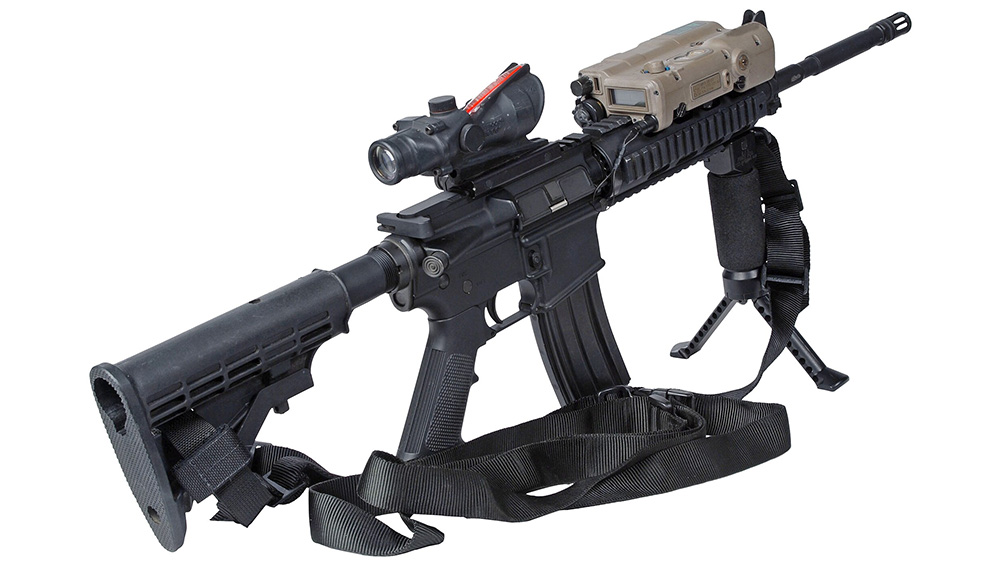
Civilian vs. Military Use: While both firearms are used in various capacities by civilians, law enforcement, and military forces, the M4 carbine is primarily associated with military and law enforcement use, including being the standard issue rifle for many military units. AR-15 rifles are more commonly found in civilian hands for sporting, hunting, and self-defense purposes.
Weight: The M4 carbine is generally lighter than most AR-15 rifles due to its shorter barrel and compact design.
A-15 & M4 Tech & Specs
Feature | AR-15 | M4 Carbine |
Caliber | 223 Remington/5.56 NATO | 223 Remington/5.56 NATO |
Action | Gas-operated, rotating bolt | Gas-operated, rotating bolt |
Barrel Length | 16 inches | 14.5 inches |
Overall Length | 32-40 inches | 29.75-33 inches |
Weight | 6-9 lbs. | 6.5 lbs. |
Magazine Capacity | 30 Rds. | 30 Rds. |
Rate of Fire | Semi-auto | 700-950 Rds/min (Cyclic) |
Effective Range | 600 yards | 550 yards |
Sights | Iron sights, customizable optics | Iron sights, customizable optics |
Stock | Fixed or adjustable | Collapsible |
Gas System | Direct impingement or piston | Direct impingement |
Safety | Manual, trigger, bolt catch/release (optional) | Manual, trigger, bolt catch/release (optional) |
Additional | Picatinny rail | Picatinny rail |
Upgrades | Various aftermarket parts for customization (triggers, grips, handguards) | Various aftermarket support for upgrades (optics, stocks, muzzle devices) |
Accessories | Supports optics, lights, foregrips, and other accessories | Supports optics, lights, foregrips, and other accessories |
Variants | Various civilian models | M4A1 (select-fire variant), various military and law enforcement versions |
Usage | Civilian, sporting, hunting | Military, law enforcement |
Final Words
In summary, the AR-15 became an iconic rifle thanks to its revolutionary design, which dates back to the 1950s. It was a scaled-down version of the more rugged AR-10 rifle, chambered for the new 223 Remington cartridge at the time. In the 80s, the AR-15 rifle got its match for military purposes, the M4 Carbine, which adopted the 5.56 NATO cartridge developed in the 70s. The M4 Carbine later became one of the standard lightweight weapons of the US military for close-combat operations. A modern AR-15 rifle became popular on the civilian market, primarily for hunting and home defense applications.
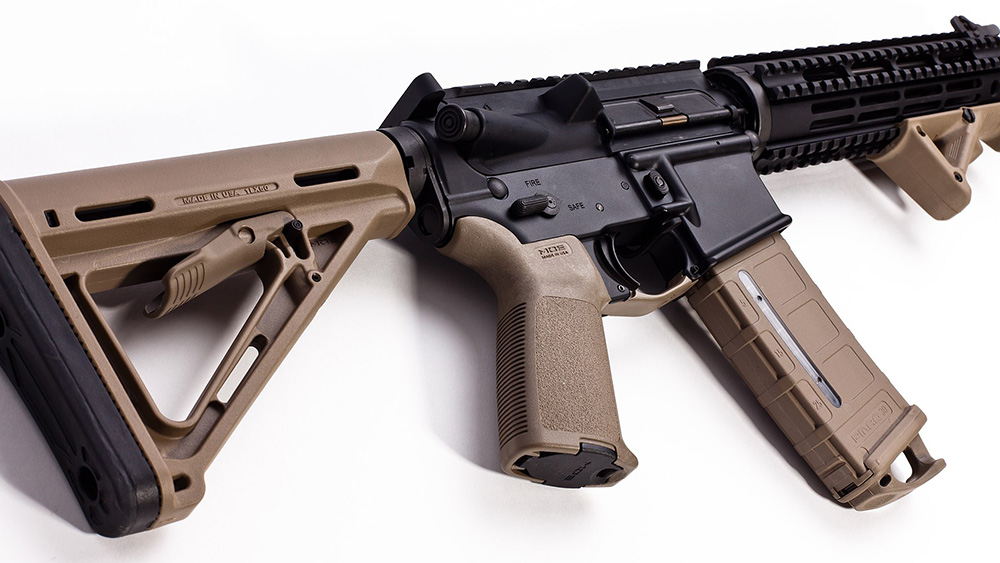
Although similar in many ways (shared platform, the same action, similar effective range), the main differences between the two are the longer barrel on the AR-15 rifles and the full-auto capabilities of the M4 Carbine, while the AR-15 rifle offers semi-automatic capabilities only. Although you can technically upgrade the AR-15 to full-auto capabilities, you should know that this is pretty much illegal. To legally own a full-auto firearm, it must date before 1986. Besides, it’s rather expensive, so the question is: does it pay off? Still, the AR-15 is a well-made alternative with great engineering and value.
Due to their features and revolutionary design, both firearms became popular over the years, each within its own field, and gained even more popularity among firearm enthusiasts thanks to movies, literature, and video games. While the M4 Carbine remains reserved for military personnel only, its civilian version, the AR-15 rifle, is available at many retailers all over the country.